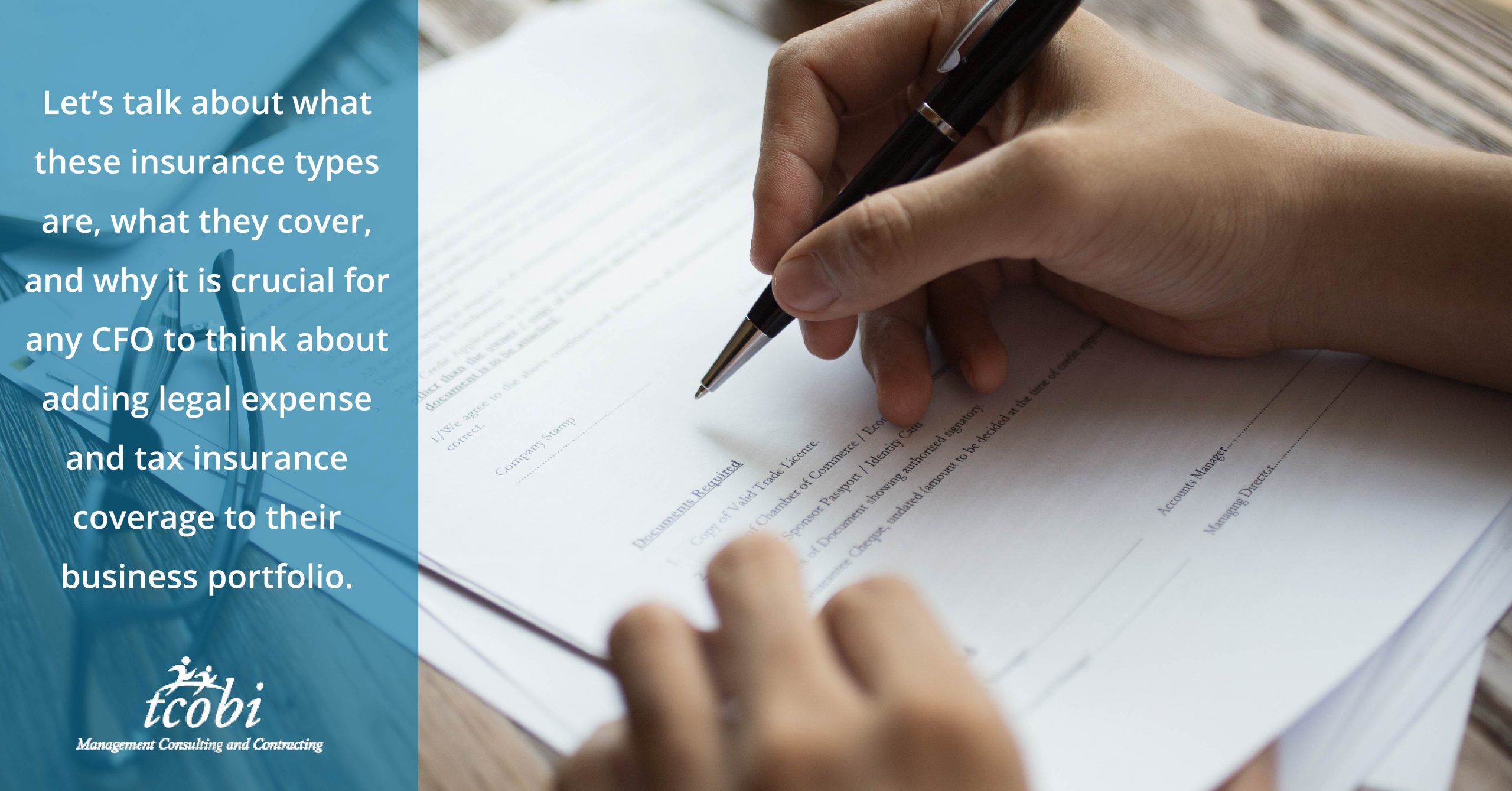Those in leadership and executive positions are always there when those…

Legal Expense and Tax Insurance
As the world has become increasingly prone to use legal avenues to settle otherwise common disputes, many businesses have found themselves vulnerable. The unexpected and often excessive costs that arise from misinformed or malicious litigation often fall between the gaps of traditional commercial insurance policies.
According to Insurance Business Canada magazine: “Forerunners to modern-day legal expense insurance (LEI) have been around since Napoleon’s time, but the modern legal expense insurance market was born in Europe during WWI and came to Canada much later, in the early 1990s.” In Canada, however, LEI remains “an emerging field with lots of room to grow. Growing awareness among brokers and consumers on the benefits of the coverage is crucial to developing the market further and providing access to justice for all.”
In this blog, I explain what these insurance types are, what they cover, and why it is crucial for any CFO to think about adding legal expense and tax insurance coverage to their business portfolio.
What does legal expense insurance cover?
Traditional commercial and business insurance is a known entity for CFOs. A business pays a premium in return for the promise that an insurer will cover loss created by a specific incident or named peril.
But what happens in those cases when the peril is (a) unexpected and (b) focused on legal issues? Legal expense insurance is designed to provide coverage in a variety of legal situations, including:
- Employment disputes in which an employee or former employee brings legal action.
- Legal defense if a business faces legal action or a formal investigation. For example, this coverage can include situations that might have a company responding to the Canadian Anti-Spam Law.
- Statutory license protection if your business faces a suspension or challenge to its business license.
- Property protection for cases in which another person causes damage or trespasses on your business property.
- Bodily injury in case you or one of your employees is injured on the job because of an act of negligence.
Legal costs covered typically include:
- Lawyers’ fees.
- Court and court-related fees.
- Expert witness fees.
- Report fees.
- Additional legal disbursements.
- Adverse costs, which you could be ordered to pay the opposing party should you lose your case.
Optional coverage can also be added for contract disputes and debt recovery. This option covers a dispute with a client or supplier concerning a breach of contract. In the case of debt recovery disputes, a business will usually receive 100 percent of the money recovered. This is preferred to traditional debt collection agencies, which take a percentage of the recovered money.
As explained in Insurance Business Canada, there are two basic types of LEI:
After-the-Event (ATE) and Before-the-Event (BTE) insurance, the latter of which is more common in Canada, though ATE offerings are also growing in popularity in the country, as revealed by an Insurance Institute of Canada (IIC) report. BTE insurance buyers tend to be small or medium-sized companies that don’t have counsel in-house, though it’s also available to individuals, and the policies respond to unforeseen legal events that can impact the business.
As its name suggests, ATE insurance helps to protect a business after an action has been initiated.
What does tax protection insurance cover?
Most simply, tax protection insurance protects a business against audit, inquiry, investigation, and review by a federal agency (in Canada, the Canada Revenue Agency) and other state or provincial agencies. The scope of such coverage tends to be comprehensive, covering T1 slip requests, GST reviews, payroll audits, and corporate reviews. A typical policy will include relief from accounting fees for current and retroactive audits; that is, for previously filed tax returns regardless of who prepared them.
This type of coverage is becoming increasingly common in Canada, given a dramatic rise in CRA audit activity, especially regarding processing reviews and limited reviews.
With the use of advanced data analysis and data matching programs, any individual or business can be selected for an audit or review. This can happen even if your returns are filed accurately and in a timely fashion. Additionally, in November 2020, the federal government reportedly committed over $600 million over five years to invest in auditing, including enhanced technologies and additional auditors focused singularly on compliance issues. In other words, the CRA is aggressively expanding its capacity to gather information and conduct a full range of audit activities. How they deploy these additional resources is a matter of speculation: focused on a targeted industry sector, a category of expense or income, or in a random pattern.
Conclusion
Litigation and audit are two words that no CFO wants to hear. For a small business, in particular, the hourly cost of legal representation can accumulate quickly, forcing some to choose between going deep into debt or facing the charges without sufficient preparation and representation. Please feel free to contact me should questions arise from this blog or if you would like to discuss in more detail how we can work together to protect your business from potentially crippling legal or audit fees.



